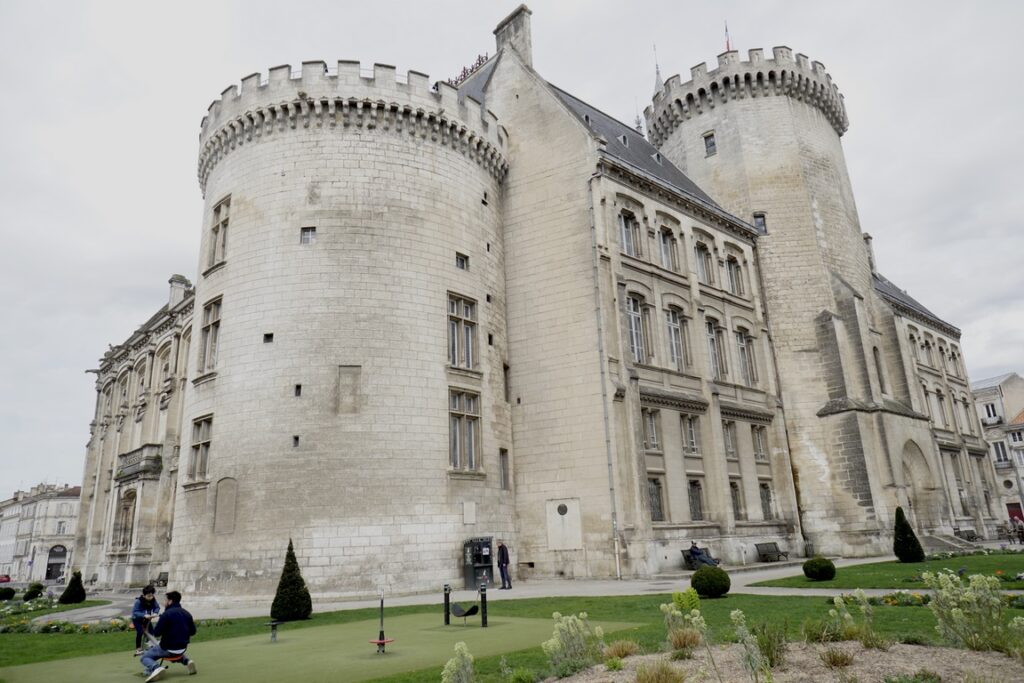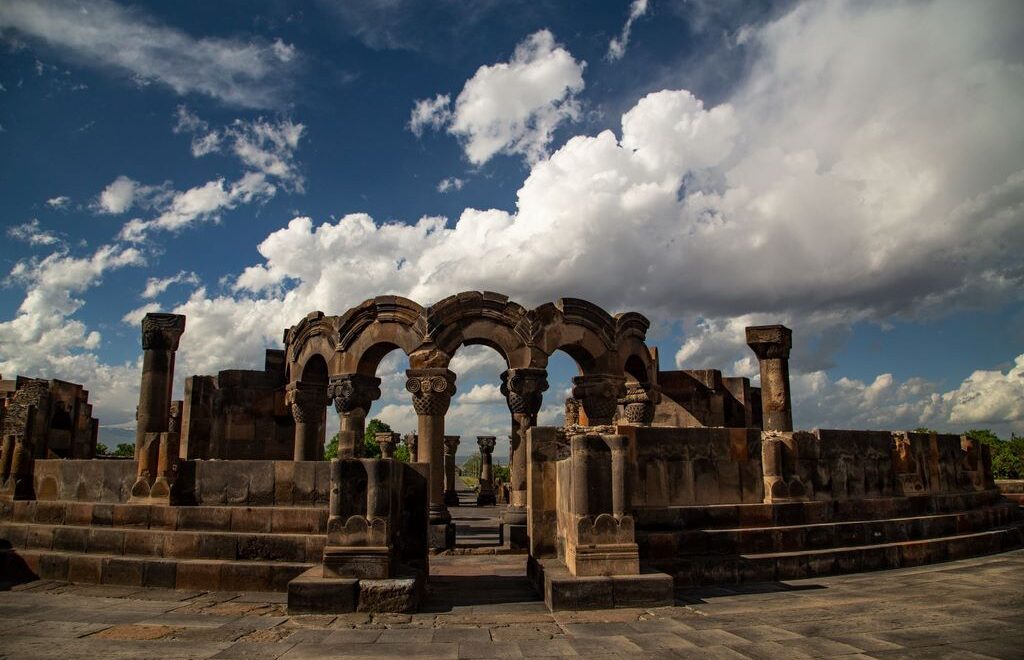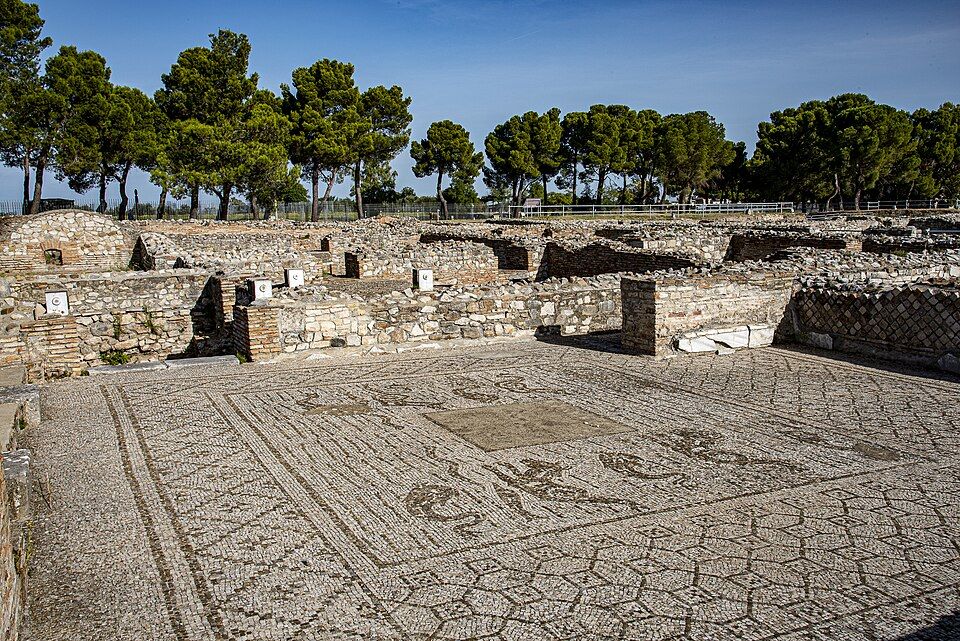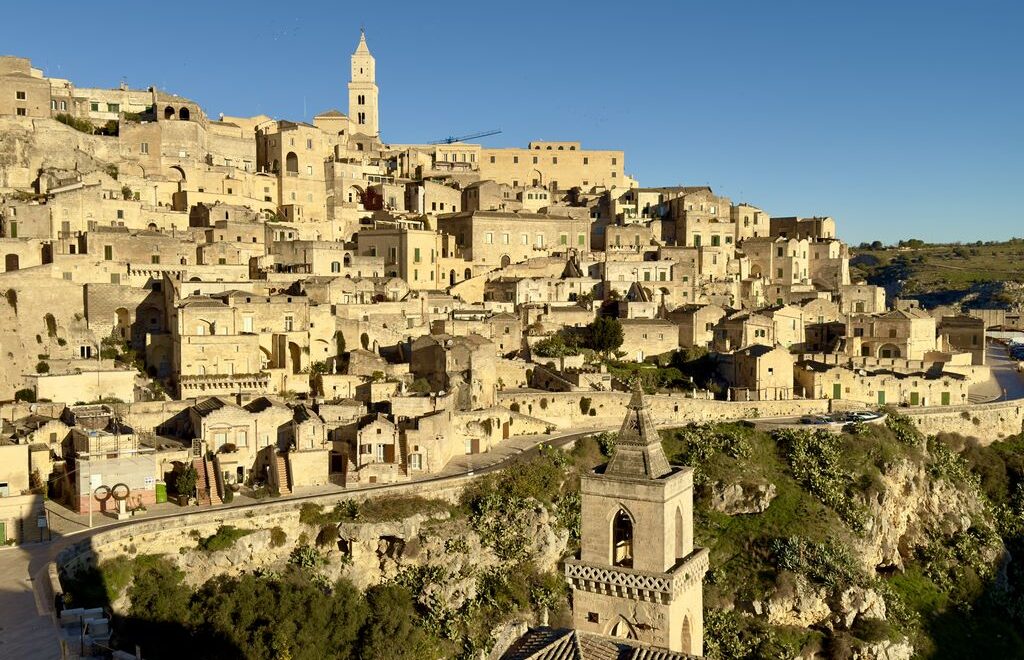
Table of Contents
The capital of the Charente region has many treasures to offer visitors: Saint-Pierre Cathedral, the resurgence of the river Touvre, Romanesque buildings... not to mention the Festival international comic strip festival. If you're a lover of heritage, culture and gentle roaming, welcome to the Angoulême region.

On leaving Angoulême station, visitors are confronted with two recent monuments that are not universally appreciated by the people of Angoulême, but which, according to the town councillors, ensure a happy continuation of the literary tradition through the proliferation of comic strips! This new popular art form, which has seen the emergence of so many talents, is celebrated here with Uderzo and Goscinny to whom these two monuments are dedicated, the merry men who created the Gallo-Roman mythology of Asterix and Obelix, whose colossal international success (393 million copies sold) made their fortune as well as that of Hachette, and is still the stuff of dreams for all the artists and comic strip fans who arrived by train...

In the Nouvelle-Aquitaine region, the prefecture of the Charente, is steeped in an artistic and literary tradition dating back to the 11th century. Situated on a spur overlooking a meander of the Charente and its confluences with the Touvre and Anguienne rivers, the town has earned the nickname "the balcony of the south-west", among other nicknames. Capital of the Angoumois region under the Ancien Régime, the town has long been a coveted stronghold due to its position at the crossroads of major river and road routes. From its tumultuous past, the city, well protected by its rocky plateau, has inherited a remarkable historical, religious and urban heritage that attracts many visitors and tourists. Today, Angoulême is one of the most industrialised cities between the Loire and Garonne rivers. It is also a commercial and administrative city, with a university centre and a remarkably lively cultural life, dominated by the famous annual International Comics Festivalwhich is making a major contribution to the city's international reputation, and the Francophone Film Festival and the Ramparts tour for classic car enthusiasts. The region's main areas of excellence are mechatronics and the industrial processes of the future, hydrogen, cultural and creative industries, digital technology, and leather and luxury goods, with the redevelopment of industrial and commercial wasteland remaining a major challenge. Finally, the town is proud of its famous children, such as Charles d'Orléans (Count of Angoulême and father of François I).
A cultural melting pot

Angoulême may have been flattered to be referred to as the New Athens, a literary reputation that dates back to the 11th century and has developed over the centuries. Recognised in 2019 as a "Creative City" by UNESCO for its contribution to literature, this literary tradition has evolved right up to the present day: in the 11th century, the city was already imbued with a literary reputation thanks to Adhémar de Chabannes, a scholar and chronicler whose writings contributed to its intellectual renown. In the 16th century, Angoulême became an important paper-making centre. The manufacture of paper encouraged cultural exchanges and the spread of knowledge, and Angoulême vellum became an international benchmark: today, you can still visit a mill on the river Charente - the the orchard mill of Puymoyen - where rag-based paper pulp was beaten and kneaded before being dried into sheets, the future support for so many letters and books ... But this cottage industry withered and then disappeared...


History of the county of Angoulême
In 1308, on the death of Gui I de Lusignan, the County of Angoulême reverted to the Crown of France. It was given to Louis d'Orléans, brother of King Charles VI, in 1394 and then passed on to his son Jean d'Orléans (1400-1467), grandfather of Marguerite d'Angoulême and François I.
The Good Count Jean d'Angoulême enlarged the château magnificently on his return from English captivity in the mid-15th century.
The town is marked by the House of Valois, which succeeded the Capetians and ruled the kingdom of France from 1328 to 1589, actively supporting literature and the arts in Angoulême. Marguerite de Navarre, née Marguerite d'Angoulême (also known as Marguerite de Valois-Angoulême), played a key role in the 16th century. Here are just a few aspects of her great influence and work: she exerted a profound influence in diplomacy, showed a certain interest in new ideas, protected writers such as Rabelais and Bonaventure des Périers and encouraged artists at the French court.
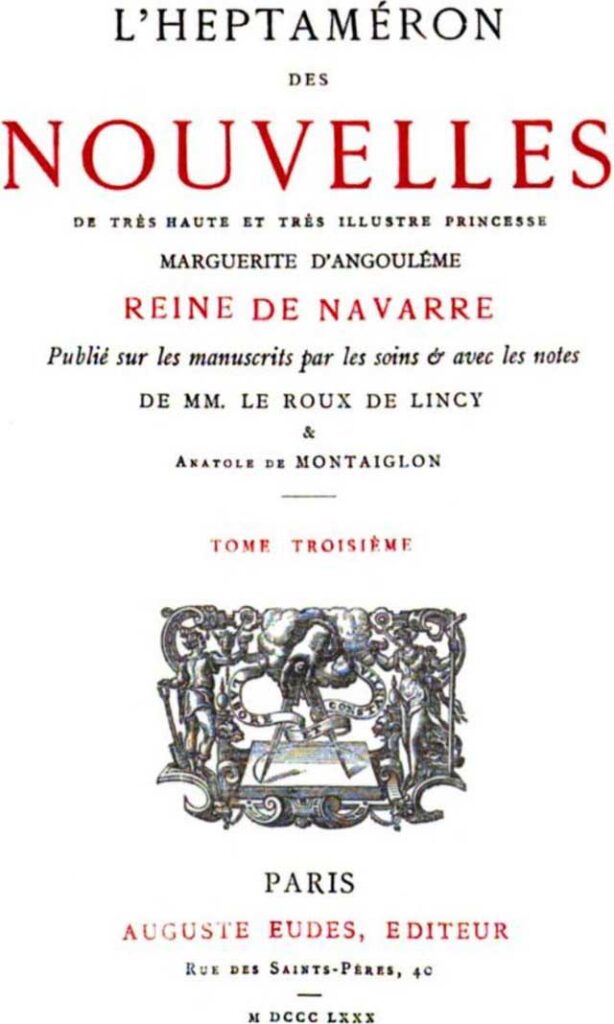
The poems of Marguerite de Navarre, known today as L'Heptaméron, are collected under the title of Marguerites de la Marguerite des princesses,published in Lyon in 1547. Sister of François I, she exercised great influence over him throughout her life and became Queen of Navarre by her second marriage in 1527. Her daughter Jeanne d'Albret was the mother of Henri de Bourbon, the future Henri IV, King of France and Navarre. After the disastrous battle of Pavia (1525), Marguerite went to Spain to console her unfortunate brother and revive his courage. Her pleas for the prisoner's freedom failed with the inflexible Charles V, but she nonetheless won the admiration of him and his court for her eloquence, grace and exceptional education. She was fluent in several languages, principally Spanish, Italian and English. Greek, Latin and even Hebrew were no strangers to him. It was probably after her return to France that she managed to secure the King's release.
Angoulême, the new mecca for comics
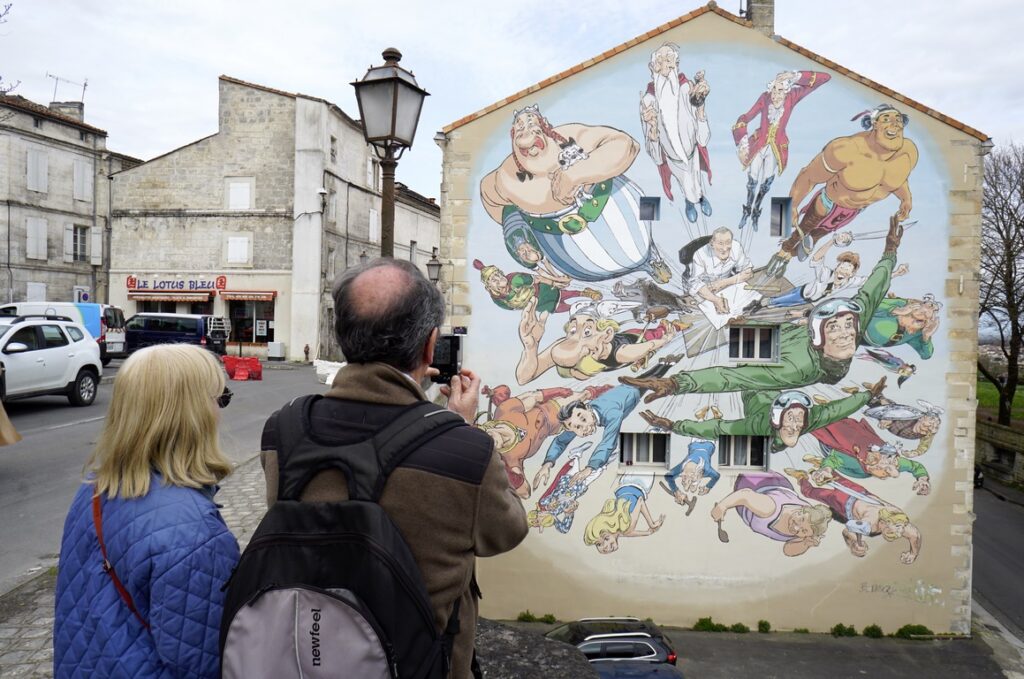
Created by François Boucq and executed by muralist Moon, the mural pays tribute to the father of Asterix and Obelix. At the centre of this huge 200 m2 fresco, Albert UDERZO is seated at his drawing table, from which his heroes emerge..
In 1974, faced with difficulties in the publishing industry, Angoulême and its immoderately ambitious mayor concocted the concept of a first International Comics Festival. This event, which soon became an annual event, encouraged the growth of the sector both locally and in France, and the festival went on to play a key role in the city's economy. Towards international recognition, the city also organises other festivals, including the Francophone Film Festival and the Courant 3D Festival.
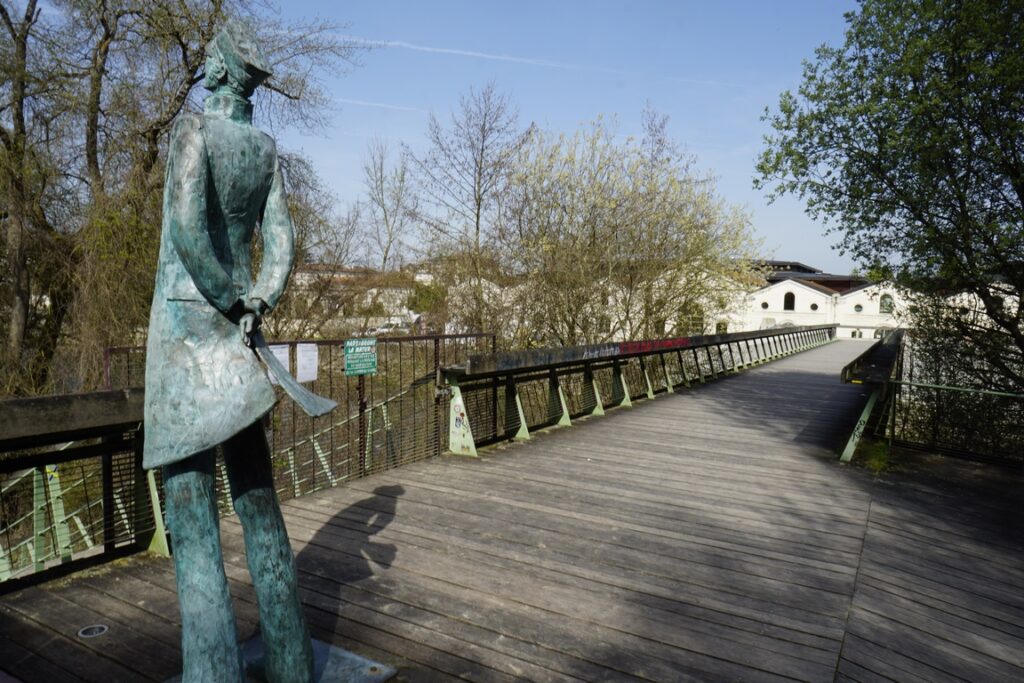
Today, Angoulême has become a centre of excellence for the arts and the creation of comic strips. Local initiatives support artists and authors, and art is integrated into the streets through frescoes and murals. In short, Angoulême has preserved and enriched its literary tradition, becoming a creative and cultural centre of international renown.
The Angoulême Festival jury awards a Grand Prize to a writer for his or her body of work from the very beginning of the year. first edition in 1974. This honorary prize, which is not endowed, entitles the winner to an exhibition at the following festival. In the early years, the jury focused on classic Franco-Belgian comic strip authors (Franquin, Pellos, Jijé and Marijac) and American (Will EisnerIn 1978, the prize was awarded to a young contemporary author, Jean-Marc Reiser (36 years), then in 1980 Fred (48), a pillar of the magazine Pilot.
From 1981 onwards, the previous year's Grand Prize winner presided over the jury. This system, which lasted until 1988, sometimes enabled the previous year's Grand Prix winner to direct the choice of his successor towards authors who were friends or close associates: the winners in the 1980s were all from Pilot (Jean Giraud/Mœbius, Mézières, Tardi, Lob, Bilal and Druillet) or leading authors of French adult comics (Gillon and Forest). From Jean GiraudThe winner of the 1981 prize, who designed the poster for the 1982 festival, is also responsible for designing the poster for the following year's festival. These two developments mark the growing involvement of the Grand Prix in the festival. In June 1982, the former Grand Prizes met at the initiative of the festival to designate a special tenth anniversary prize, which was awarded to Claire Bretécherwho co-presided the 1983 festival and was awarded the 1982 Grand Prize Paul Gillon and was given an exhibition.
Although the festival was intended to be international, for a long time the majority of the Angoulême Grand Prix was awarded to authors from France. Franco-Belgian comics Until 2010, only four of the 42 winners of the Grand Prize or a Special Prize were not French-speaking - and the French far outnumbered the Belgians. Since 2011, however, the prize has become much more international, with four Americans and three Japanese winners. The prize has been criticised for not having been awarded to anyone for a long time. Japanese author despite the importance of mangas in France; however, three have been awarded since 2013. With a median age of 52, the prize rewards a career, whereas the golden fawn is more a case of an author "in the making". Only five women (Claire Bretécher in 1982, Florence Cestac in 2000, Rumiko Takahashi in 2019, Julie Doucet in 2022 and Posy Simmonds in 2024). The low number of women winners has also been the subject of controversy.

Benjamin Rabierthe illustrious universal illustrator of the comical and extraordinary lives of animals, and creator of the image of La-vache-qui-ritThis is why he deserves his place in the pantheon of the geniuses of this art celebrated in this museum of comics, which boasts thousands of original plates (fans will be aware of the value that some of these works can fetch in auction rooms, i.e. several hundred thousand euros!)
An eventful history of the Château des Ducs d'Angoulême
From the 10th to the 13th century, the Counts of Angoulême, the Taillefer family and then the Lusignan family strengthened the town's defences and extended them to include the Saint-Martial district.. In 1308, on the death of Gui I de Lusignan, the county of Angoulême reverted to the French crown. It was given to Louis d'Orléans, brother of King Charles VI, in 1394 and then passed on to his son Jean d'Orléans, grandfather of Marguerite d'Angoulême and François I..
The construction of Angoulême's current town hall on the site of the former Valois château was the subject of a heated debate between Paul Dabadie, the architect in charge of the works, and members of the Société d'Archéologie et d'Histoire de Charente (SAHC). Mr Dabadie wanted to demolish the château immediately, but the archaeological society, whose mission is to ensure the conservation of the country's historic monuments, expressed its support for the building.
Built between 1858 and 1869 in a style that is, to say the least, "eclectic", the château is largely inspired by medieval aesthetics, with a few references to the Renaissance, neo-Gothic style and Classicism. All that remains are the Lusignan keep (13th century) and the Valois tower (15th century), historic elements that have been saved with difficulty, drowned in the massive eclecticism of the official and administrative architecture of Mr Dabadie, who was more successful in the very costly renovation of St Peter's Basilica...
Fans of provincial history should be aware that, following a regional competition held in Angoulême on 17 May 1877, the statue of Marguerite de Valois by M. Badiou de Latronchère was unveiled and donated by the artist to the town, then erected on the square in front of the new town hall, where its last admirers still gather. Despite the muted opposition of a number of detractors, including Prosper Mérimée, Inspector of Historic Monuments, two historic speeches were made at this solemn celebration, one by Mr Mathieu Bodet, former Minister of Finance and President of the Charente General Council, and the other by Mr Babinet de Rencogne, the town's archivist and President of the department's Archaeological and Historical Society...
Saint-Pierre Cathedral

Work on Saint-Pierre cathedral began in 1100 under the impetus of Bishop Girard and has been virtually uninterrupted ever since, as is the fate of great architectural works that each new generation tends to preserve or... improve, apart from its transformation in temple of Reason during the Revolution. Its main façade, richly decorated with small sculpted scenes, often not very peaceful, is seen by some as a foreshadowing of the city's future role in the spread of comics. Some of these were carved around 1118-1119, the date that corresponds to Zaragoza's return to the reconquest of Spain against Saracens. This victory is illustrated by two scenes from the Roland's Song which also recount Roland's victory at Saragossa. The left-hand side of the frieze illustrates the equestrian combat of theBishop TurpinIn the centre: the king, wearing chain mail and a mitre, against the giant Abisme, whom he pierces with his spear. In the centre: a gonfanonthen right, Roland, nephew of Charlemagne, continues Marsilethe King of Saragossa, cuts off his opponent's arm with his sword, his horse having already turned away. Then, in the next scene, Marsilio falls before the open gate of Saragossa.

The treasure by Jean-Michel Othoniel

The project to showcase the treasures of Angoulême Cathedral was entrusted to the sculptor for the scenography. Jean-Michel OthonielThe treasure is part of a public artistic commission, supported by the sponsorship of Engie. The treasure is housed in the Gothic chapel of Saint-Thibaud, located along the eastern wall of the south transept, as well as two rooms on the first floor of this chapel, built from the remains of the bell tower destroyed by cannon fire by the Huguenots in 1588. The Wars of Religion shook the Angoulême region for some thirty years (Ravaillac, the Huguenot regicide of the "renegade" king, was a native of Angoulème). The "journey" is divided into "3 stations", each corresponding to a theme: the Lapidary, the Commitment, the Marvellous. The artist has completely transformed the space, and is presenting nearly 150 restored objects of sacred art from all over the diocese.

All the necessary explanations and interpretations of the artist's will and talent are elegantly conveyed by the suave voice of Marie Reine Bernard, a DRAC-accredited guide whose presence is compulsory for the visit, which must be booked in advance.

In this jumble of sacerdotal objects, a reliquary created by the artist to house a small bone, a modest relic of Saint Peter, is particularly noteworthy. Pierre Aumaîtrea priest from Charente who was martyred in Korea in 1866 and canonised in 1984.
This moving relic is similar to the gigantic Turiasaurus tibia discovered in Charente by doctoral student Maxime Lasseron and exhibited alongside a number of other artefacts in the museum curated by the media-savvy palaeo-archaeologist Jean-François Tournepiche.

A few black anecdotes from history...
Criminal cases in Charente (1793 - 1818) During the revolutionary turmoil, a gang of criminals known as "chauffeurs" committed numerous crimes in the countryside around Angoulême. These bandits used brutal methods, such as burning their victims' feet to find out where they were hiding their money..
The Auberge Sainte-Barbe One of the leaders of this gang, originally from Saintes, continued his criminal activities during the Empire at the Auberge Sainte-Barbe, near Angoulême.
Siege of Angoulême by the Vikings (848) In the middle of the 9th century, Angoulême was raided and pillaged by the Vikings, who travelled up the Charente and pillaged the town.
Comic strip exhibitions at the Cité internationale de la bande dessinée et de l'image

The permanent exhibition "Croquez ! Comics put their foot in it" permanent exhibitionuntil 10 November 2024, exploring the relationship between food and comics... Bon appétit!
Riad Sattouf, "L'Arabe du futur œuvre-monde" (The Arab of the future, a work of the world) : This is one of the last opportunities to see this exhibition, as it is in its final days.
Thierry Smolderen "The script is a DIY project". This exhibition sheds light on the process of creating a comic strip script.
La Cerise turns 20 Celebrating the 20th anniversary of the publisher La Cerise, this exhibition is also in its final days.
Treasures from the collections From 30 May 2024, this exhibition will showcase rare and precious items from the Cité's collections.
For more information on timetables and prices, visit the official website at International City of Comics and Images https://www.citebd.org/
Text and Photos : Sylvain Grandadam




